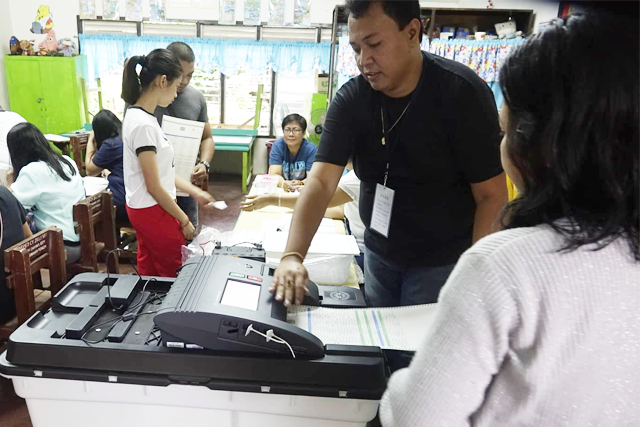The sporadic glitches of the transmission server brought suspicions of possible cheating in the counting of votes of the automated elections.
Senator Panfilo Lacson and election watchdog National Citizens’ Movement for Free Elections (Namfrel) expressed their concerns on the situation.
Namfrel said that 2.25% of 85,769 local election returns (ER) have not yet reflected on the transmission server.
It urged municipal and election officers to transmit the unreported ERs as their numbers may still change the ranks of the senatorial candidates, particularly the one in the 12th place.
“2.25 % of 85,769 is equivalent to 1,930 untransmitted local ERs. Assuming a 75 % turnout of voters in the May 13 elections, this means 1,043,721 votes which should still be coming in. This number is large enough to reorder the positions in the senatorial race, and most importantly, define without doubt the No. 12 or the last slot placer,” the statement from Namfrel said.
The election body noted that the margin of votes from the last five places is close.
“The margin of votes between the current 10th to the 14th placer now stands at 398,000 well within the 1,043,721 unaccounted votes,” Namfrel said.
It cited VCM malfunction, transmission issues, SD card issues and other factors as the reason for the delays in transmission since Election Day or May 13.
As of press time, the Comelec transmission server showed partial unoffical results with Bong Revilla at the 10th place, Koko Pimentel at the 11th, Nancy Binay at the 12th, JV Ejercito Estrada at the 13th and Bam Aquino at the 14th.
Senator Panfilo Lacson also aired his frustration on the glitches of the transmission server.
“Election 2019: From simultaneous transmission at precinct level to a newborn animal called transparency server a.k.a. traffic controller. Why?” Lacson tweeted on May 15.
Election 2019: from simultaneous transmission at precinct level to a newborn animal called transparency server a.k.a. traffic controller. Why?
— PING LACSON (@iampinglacson) May 15, 2019
The lawmaker called on the need to conduct a Senate probe into these issue with the Commission on Elections (Comelec) transparency server.
Untransmitted ERs had been a “perennial” problem in the local automated election system, Namfrel said.
According to the watchdog’s data, failed transmission rates were as follows: 9.5% of 76,528 ERs in 2010, 24% of 78,193 ERs in 2013, and 3.5% of 92,506 ERs in 2016.
The poll body repeatedly assures the missing ERs will be “aggregated” in the final count.
However, Namfrel notes that Comelec doesn’t disclose the aggregation process to the public.
“In this election however, not only should the 2.25% untransmitted rate be reduced to the lowest level possible, but COMELEC should also open the aggregation procedure to the political parties, election monitoring bodies and to the general public. Every vote counts,” Namfrel said.
Although this is the fourth time the country undergoes automated elections, this is the first time in nearly 20 years that Namfrel was not the accredited election overseer.
Namfrel declined Comelec’s accreditation offer as the citizen’s arm in this elections because Comelec refused to provide them access to election and voters information materials such as the main server data and computerized voters’ list.
Anomalies
Namfrel listed six problems observed by its volunteers in different parts of the country.
These are violence, voter disenfranchisement, malfunctioning vote-counting machines, unauthorized handling of election materials, vote buying, inaccessibility of special polling areas to persons with disabilities, pregnant women and senior citizens.
Aside from Namfrel and Lacson, Sarah Elago of Kabataan Partylist and Antonio Tinio of ACT Teachers party-list also demanded the poll body to explain the inefficiency of the transparency servers.
Kailangan pong ipaliwanag ng Comelec kung bakit hanggang ngayon walang update ang transparency server nito. Di tulad ng 2013, 2016 elex na halos real-time ito. 71% na ngayon ang nabato sa main server pero 0.38% pa lang ang nasa transparency server.
— Sarah ng #42Kabataan (@sarahelago) May 13, 2019










